Epilogue
I see no reason for the Noctua NF-A12x25 G2 LS-PWM, as it is both too expensive and too weak for even non-demanding applications. From the moment you can select the appropriate speed in any PWM-driven fan, why go for such a low-speed one? It is like buying an expensive car that can reach a maximum speed of 100 km/h, while for the same money, you could get one that can go up to 200 km/h. It is up to you to choose the maximum speed, so why have a stupid limitation at 100 km/h when you’re paying the same price? I’m not sure what Noctua intended with this product, but in my expert opinion, it is unnecessary in today’s market. Just go for the “plain” G2 model, which costs the same, and set its speed lower, if you want it to be silent.
Let’s now look at the max speed performance. I cannot choose 25 dBA, the typical normalized noise level I use, since the NF-A12x25 G2 LS-PWM cannot even “hit” 20 dBA.
The graph above shows what you get by paying the premium price that Noctua asks for this product. A weak fan that is barely usable for any application. From the moment there are highly affordable, yet high-performance fans like the Arctic P12 Pro ($8.5) I cannot see why go with this Noctua product. You have to be a strong fan of this brand to go with the NF-A12x25 G2 LS-PWM fan.
To wrap up today’s review, the new Noctua NF-A12x25 G2 LS-PWM has top-notch build quality and it also comes with a rich bundle, but you pay a lot for such a weak fan which won’t be suitable for the majority of cooling scenarios that most users face in real life. There is no reason behind this product, from the moment you can get the “plain” G2 at the same money and tune its speed lower, if you want silent operation. On the other hand, you cannot set the speed of the NF-A12x25 G2 LS-PWM higher than 1100 RPM, if you need higher airflow and static pressure.
For reference, at the time of the review, the following prices applied in the US market (Amazon):
- ARCTIC P12 Pro: $8.5
- ARCTIC P12 PWM PST (5 Pack): $40
- be quiet! Silent Wings 4 120mm High-Speed: $27
- Corsair RS120 Max: $35
- Endorfy Fluctus 120 PWM: $15
- Phanteks T30-120 Triple-Pack: $115
- Phanteks M25-120 Gen2 ARGB Triple Pack: $37
- NF-A12x25 G2 LS-PWM: $34.9
- Scythe Grand Tornado 120mm: $20
- Thermalright TL-C12C: $12.9 – 3x fans combo
- Thermaltake Toughfan Pro 12: $25
- XPG Vento Pro 120mm: $23
Below, you will find several 120mm fan reviews to get more insights about this product category.
- Alpenföhn JetStream 120mm Fan Review
- Arctic P12 Max Showdown – Black (DBB) vs White (FDB)
- Arctic P12 Max (Black – Double Ball Bearing) Fan Review
- Corsair iCUE Link LX RGB 120mm Fan Review
- Hyte THICC FP12 120mm Fan Review
- JONSBO SL-120 120mm Fan Review
- Montech GF120 ARGB PWM 120mm Fan Review
- Noctua NF-A14x25 G2 PWM Fan Review
- Segotep HQ12 PRO 120mm Fan Review
- Scythe Grand Tornado 120mm Fan Review
- Phanteks T30-120 Cooling Fan Review
- Phanteks M25 Gen2 120mm Fan Review
- Thermaltake TOUGHFAN 12 Pro Fan Review
- Thermalright TL-K12 120mm Fan Review
- Thermalright TL-C12B V2 120mm Fan Review
- Tryx ROTA Pro 120mm Fan Review
- XPG Nidec Vento Pro 120 PWM Fan Review
Before investing in new cooling solutions, read my Best Cooling Fans article to check all alternative fan offerings. You help me a lot by using my affiliate links, which don’t increase the price of the product. I receive a commission from Amazon every time you do it, which can make a significant difference for me, especially now that I am working independently, exclusively for my media, rather than for someone else.
- Top build quality
- Low noise output
- SSO bearing with increased lifetime
- PWM control
- Anti-vibration pads
- Rich bundle
- Low performance
- (Super) Expensive
- No daisy-chain feature
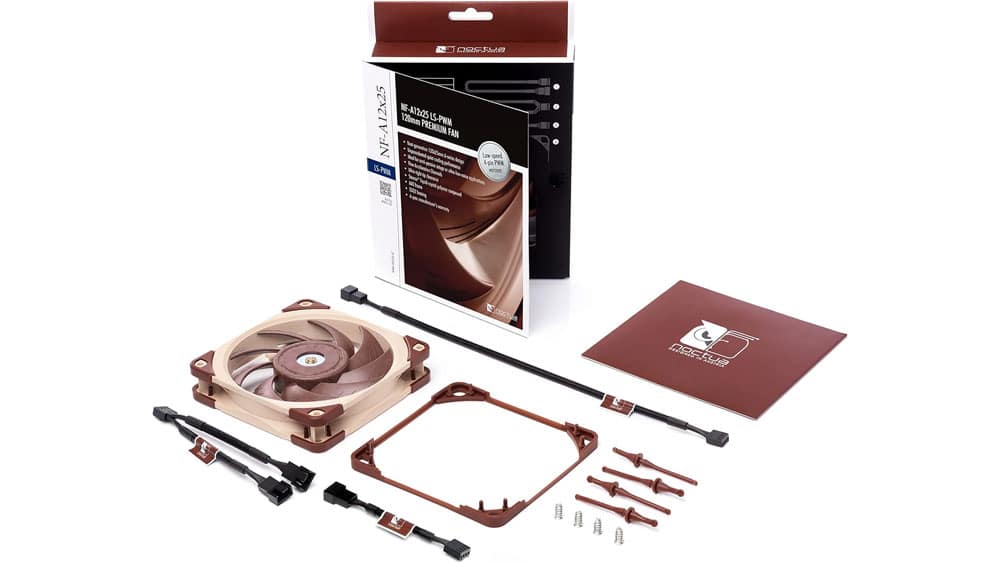
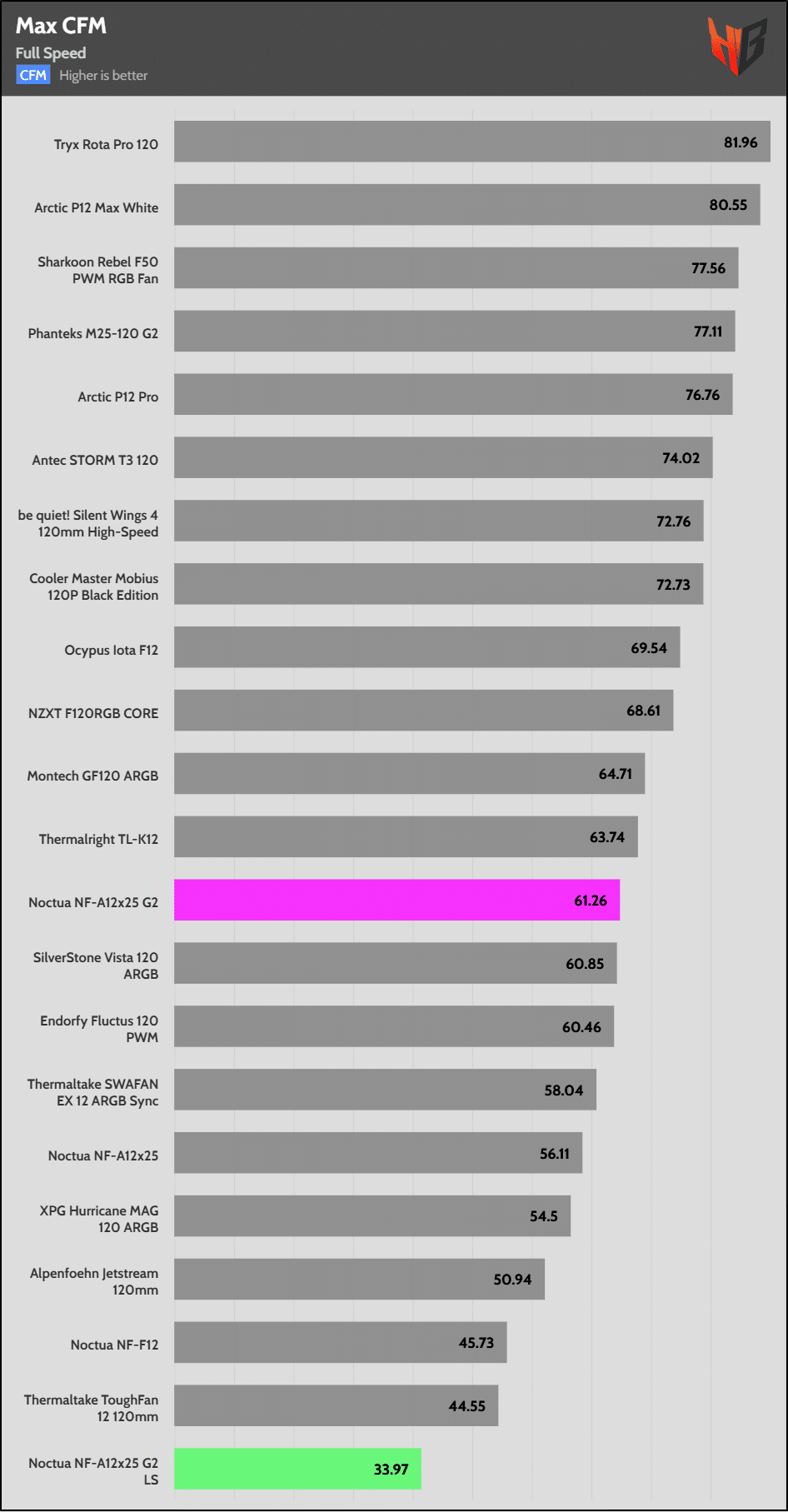
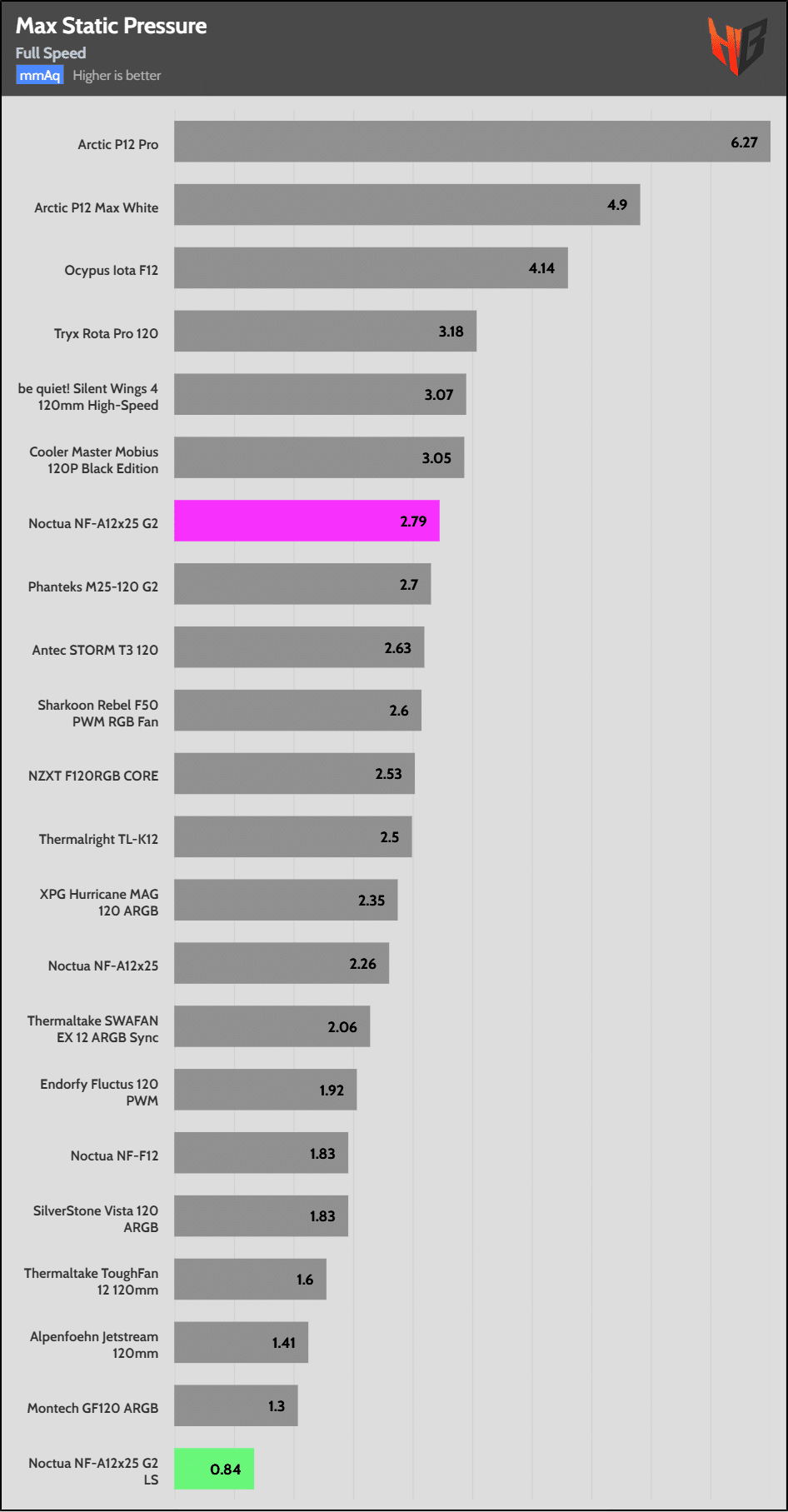
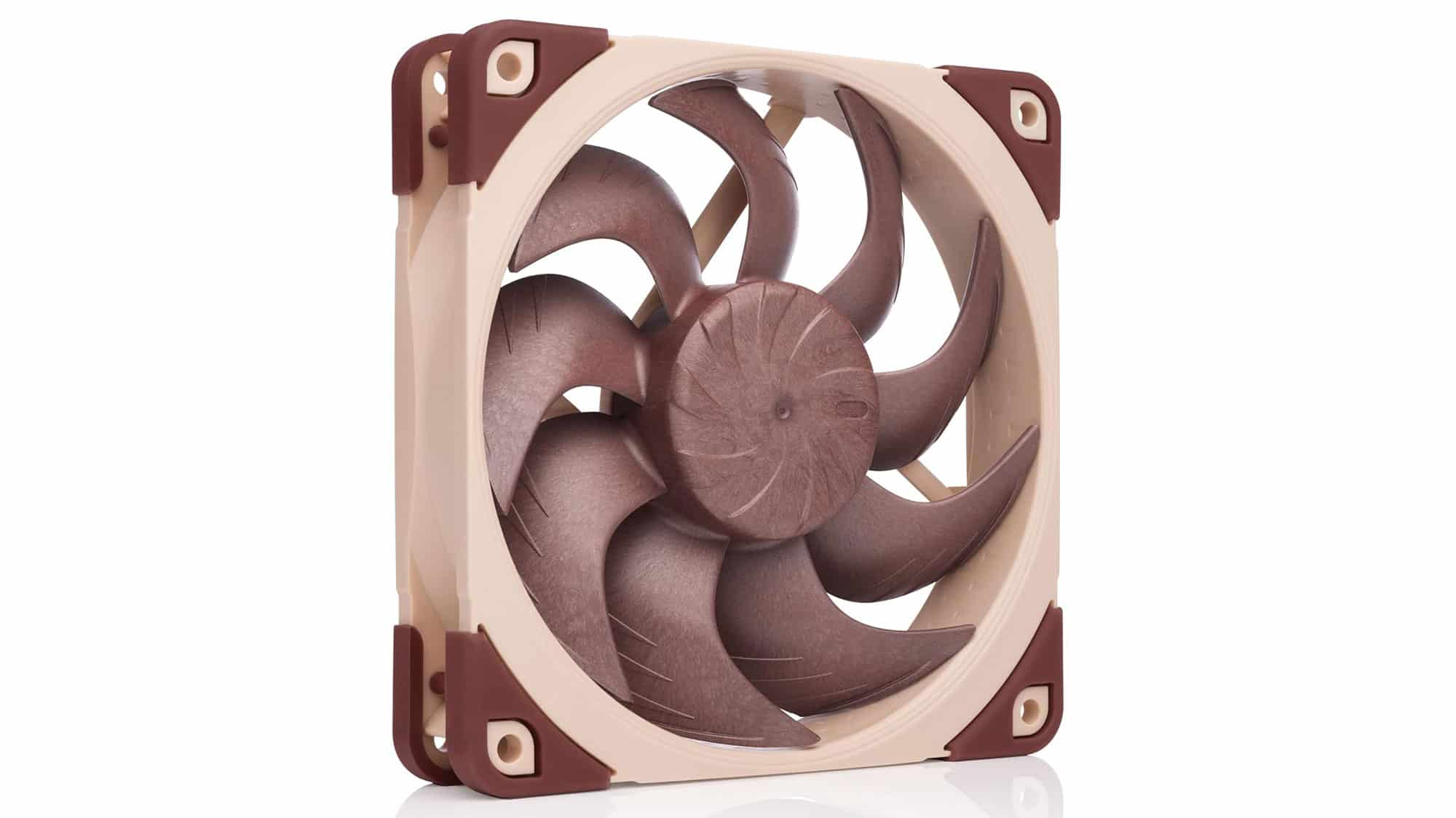
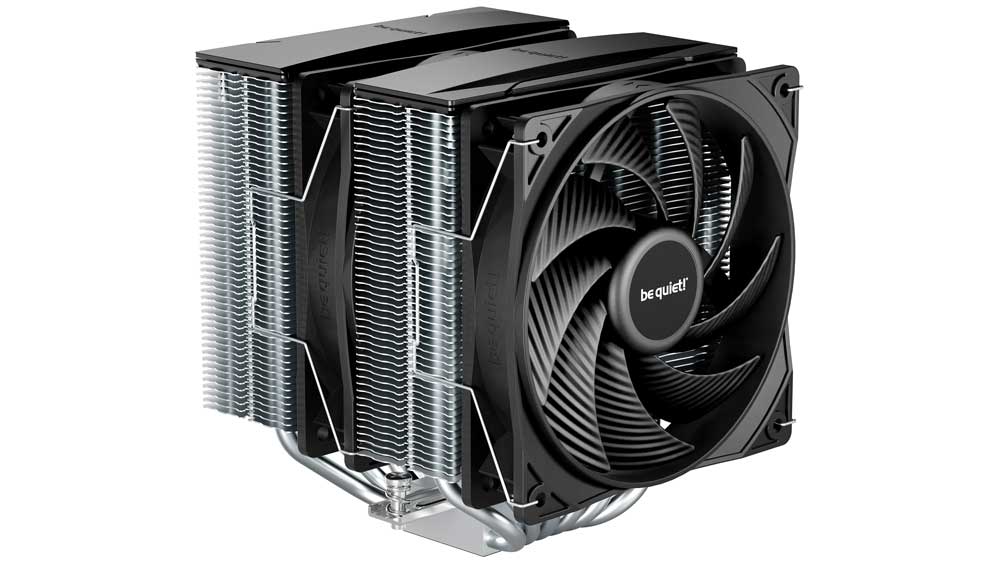
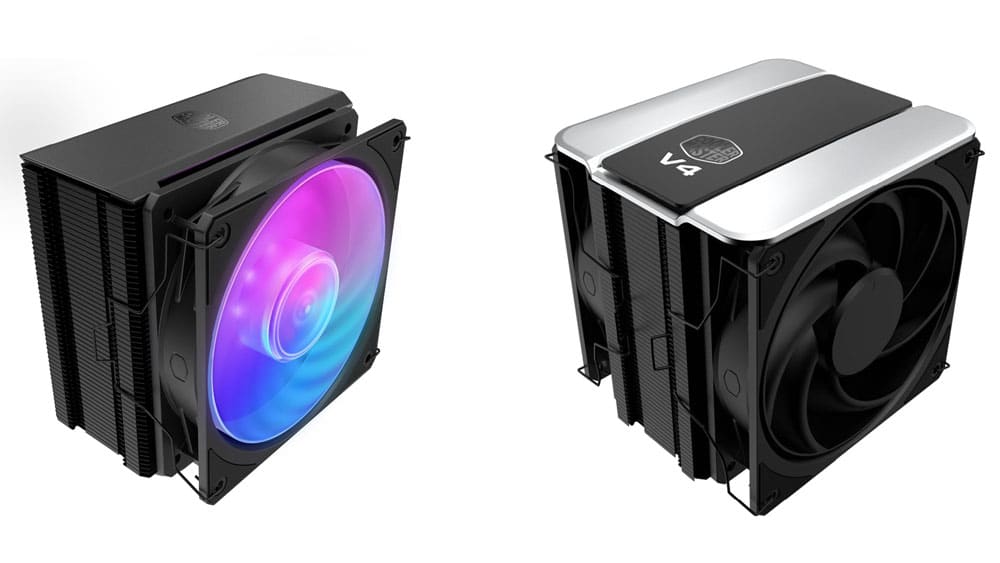
Why this product exists? Because despite the new products, Noctua is mostly stuck in the past.
With each fan, you keep getting these ‘accessories’. Y adapter, cable extender, (U)LN adapters, screws, sometimes molex power adapter (only 12V and not 7 or 5V variant (or all 3) + who the hell still uses molex?), rubber mounting pieces and since the A12x25 G1, rubber gaskets.
From all these, only the Y adapters, cable extenders and screws make sense. To a degree. You see, Noctua fan cable is one of the worst to work with, when routing it through the case. It doesn’t wanna bend no matter what. And nobody would need a cable extender, if… the fans just had longer cables. It can be done for Redux, why not for normal brown fans? On top of all that, Chromax fans have no cable at all. WHYYYY?
Y adapters – i don’t get, why it is still a separate adapter and not included on the fan power cable. From my experience, working with them is a pain, mostly due to the aforementioned reason regarding the cable, with the exception of bits near the connectors – and it is possible to twist these so much, some fan(s) may lose contact. And bear in mind, you get 1 Y adapter with each fan. So if you order like 6 fans, do you need 6x Y adapter? Over the years, i’ve amassed quite a collection of these. Not to mention daisy chaining all of them creates very nasty cable centipede.
Screws from Noctua are one of the best i’ve ever seen – almost. They have small Philips head. In some cases, i had to use different ones with larger head, because these kept falling through fan mounting points.
Most of the rest are relics of the past. I believe that Molex power adapters are self-explanatory. (U)LN adapters, however, don’t make sense anymore, for at least last 8 years or so. Motherboard fan controls are already good enough for very precise fan speed control, including max fan speed.
Rubber mounting pieces and rubber corners – over the years of owning and using Noctua fans, i’ve never had one rattle against the case. Ever. Even without rubber corners, they don’t make single shiver go into the case. Which means i’m always using screws. Much simpler mounting. The only possible reason for using the rubber mounting, is due to how little durability Noctua screw holes have. I’ve had some of them literally crumble and fall apart in the past (the plastic they use for fan frame is strong, but fragile). I consider this a ‘planned obsolescence’ strategy by Noctua – it’s something i’ve never, ever, encountered with any other fan on the market. If you remove fans, when cleaning the case, you will over time face this issue yourself – and since this is a mechanical damage, it’s not covered by warranty.
Rubber “seal” gasket – put this thing on the fan and then against a surface. Do you notice anything wrong with it? The so-called “seal” sides don’t actually seal anything – they’re too flimsy for that. For this gimmick to actually work, it would have to be built differently (the rubber would have to have “overhang” over the corner of the fan on all sides). If you want the fans to be sealed against a surface of a radiator, remove all rubber corners from the back side and try to mount it again.
If you visit any e-shop and try to figure out prices of all accessories, you will figure out, that with each fan, Noctua is selling to you junk worth of 8-10€ (or more), not to mention it all comes to you in big package packed in a piece of plastic… And don’t get it wrong, you’re definitely paying for all that.
The review is bit based.
I replaced the 2 fans from my AiO with 2 silentum pc fans, but after about 2 years they got really loud.
So I replaced them with Noctua, now they are even more quiet and won’t break so fast.
Noctua main selling point is low noise level and reliability.
And even in your test, the Noctua won in noise level by a large margain.
Your recomended Arctic P12 Pro takes almost 5x more power, spins 3x faster only giving 2,3x more CFM while being 5,7x louder on 70% and 2,5x louder on 100%. How about lowering Arctic P12 Pro RPM to match Noctua and then testing them both? It would be interesing, since pretty much nobody tests fans like that.
“I see no reason for the Noctua NF-A12x25 G2 LS-PWM, as it is both too expensive and too weak for even non-demanding applications.”
How did you determined that it’s too weak? Only by looking at CFM and static pressure? I don’t see any tests using AiO radiatior or standard cpu radiatior with these fans here.
“It is like buying an expensive car that can reach a maximum speed of 100 km/h, while for the same money, you could get one that can go up to 200 km/h. It is up to you to choose the maximum speed, so why have a stupid limitation at 100 km/h when you’re paying the same price?”
Poor analogy, when you drive only in city that has 50-90 km/h speed limit then car with 100 km/h max speed is viable option.
Getting something way over your needed specs isn’t always the best option.
1100RPM isn’t anywhere slow speed anyway, but may allow better granularity of control over PWM than the regular variant, allowing users to squeeze out every last bit of performance while still staying below the noise threshold
though it’s unlikely to be the only fan in the build, so you’re likely expected to use paired offset fans anyway, and these likely won’t allow such a tight speed control anyway so… I’m not sure what is the exact point of these personally
> I’m unsure who would pay 35 dollars or euros for a fan that spins so slowly.
well, this is a weird question, these fans cost so much because they are able to offer meaningful performance even at low noise levels, they cost so much to design and manufacture for that reason, so it absolutely wouldn’t make sense to run them at high speeds where these tiny improvements make little to no difference
I am not sure about the “meaningful performance”, especially as a radiator fan.
Three Noctua NF-A12x25 G2 fans for a 360mm radiator cost €105 in Europe.
The Alphacool NexXxoS ST30 360mm costs €63, and the Bykski RC-30 360mm costs just €40.
Three plastic fans are nearly double the price of a 360 mm copper radiator…
There is nothing so special or new about the G2 version of NF-A12x25 when compared to the already existing fans on the market.
The Noctua NF-A12x25 G2 is definitely a pretty good product, but I think that price tag is very hard to justify.
Also, I wouldn’t be surprised if the NF-A12x25 G2 is mainly designed by Kolink. They are the manufacturer of the Noctua products.
in my experience many recommended fans never achieve the expected noise level, not to mention doing anything useful at that point
A12x25, T30-120 and A12x25G2 are notable exceptions
and they still move meaningful amount of air at a reasonable pressure even at that point
would running them, or other fans faster provide better performance? obviously
but the acoustic cost is too high, I’d rather throw money at the problem than suffer in a noise
small details matter, you can design the best impeller in the world but when your bearings or motor are low quality it makes it irrelevant as their noise will be annoying long before the aerodynamic noise becomes a problem
is the price high? yes, definitely
but as the fan providing the best silent performance among the 120×25 bunch and taking T30 head on (or even winning, but due to lack of silence oriented tests there’s no definite data) it’s justified
could it be cheaper? maybe, who knows? possibly limiting accessories and margin a bit would make it more approachable and double or triple sales, but when you want the best silent performance you really have no other choice
if you accept the noise of 1200RPM or more you can easily buy a 3 or 5 pack at the price of one this fan and will be happy, but when you want silence you have to consider every smallest detail